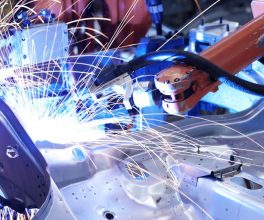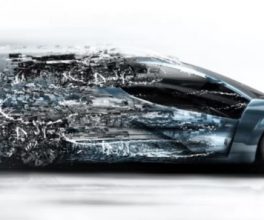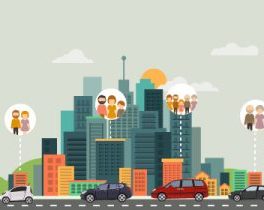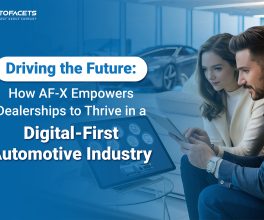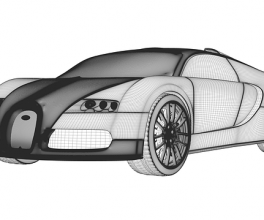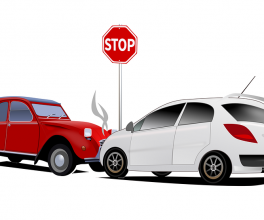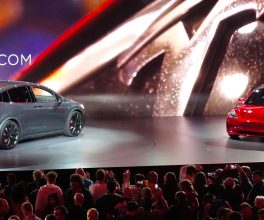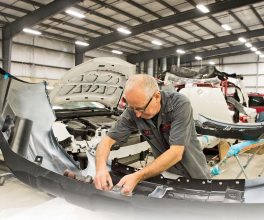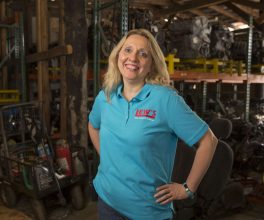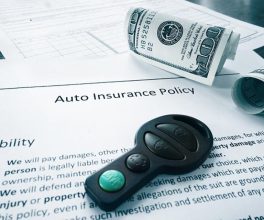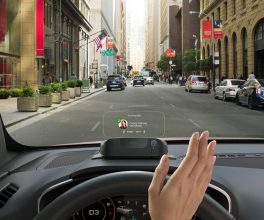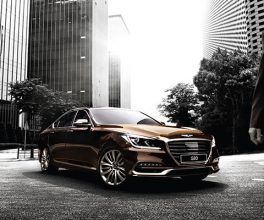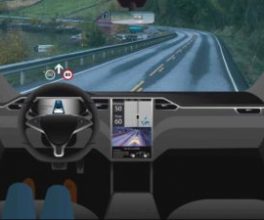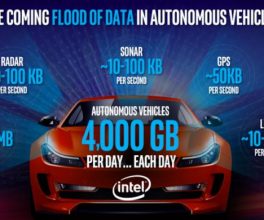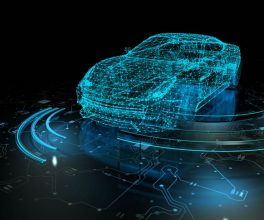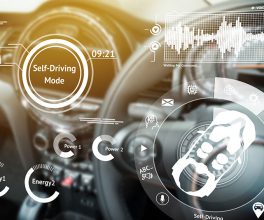Michael Nash and Freddie Holmes discuss the end goal for vehicle connectivity and automation with FEV’s Stephan Tarnutzer
In a move to centralise the global interdisciplinary development of connected and autonomous vehicle technologies, FEV has announced the establishment of its ‘Smart Vehicle’ Center of Excellence (CoE). The company’s aim is to make progress in the areas of vehicle-to-everything (V2X) and vehicle-to-cloud (V2C) communication, as well as cyber security and advanced driver assistance systems (ADAS).
Headquartered in the US, the CoE’s global activities will be managed by the FEV’s Vice President of Electronics Stephan Tarnutzer. Speaking to Megatrends, Tarnutzer described his expectations for the CoE and a long-term vision for the smart, connected vehicle.
Going above and beyond
“The ultimate smart vehicle is connected through a variety of different means to the outside world,” he explained. “That could be through Wi-Fi, Bluetooth-connected smartphones, through dedicated network access devices or cellular connectivity, all of which are embedded in the vehicle.”
As well as being highly connected, Tarnutzer believes that the ultimate smart vehicle will come equipped with a battalion of cameras and sensors, which are vital for the realisation of highly automated driving.
Some vehicles on the market today already come with many cameras and sensors. For example, in October 2016 Tesla announced that all its vehicles would now come off the production line with eight cameras and 12 sensors, as well as forward-facing radar, installed and ready for use. This, said Tesla Chief Executive Elon Musk, would allow the company to push forward with autonomous driving in the future.
The ultimate smart vehicle is connected through a variety of different means to the outside world, all of which are embedded in the vehicle
“All these sensors are currently focused on enabling ADAS features,” Tarnutzer noted. “But very soon, those building blocks will be used to achieve Level 3 autonomous driving and beyond.”
Another important characteristic of the ultimate connected vehicle, Tarnutzer continued, is to act as a secure source of data. He suggested that infotainment systems will be able to provide drivers with more data and information, helping them to get to their destination in the safest, quickest and most fuel-efficient manner.
“It can even go beyond that,” he noted. “These infotainment-come-telematics systems can already provide information on movie times, or the nearest fuel station. They could soon interact with grocery stores, or make appointments for hospitals to stop the occupant from waiting in line, for example. There are so many opportunities out there.”
Integral but not central
All of these capabilities, Tarnutzer continued, will be reliant on a solid and robust connection to the Cloud, where information can be passed back and forth between the vehicle and the necessary parties safely and securely. “The Cloud can also be used to store data from other vehicle owners regarding the weather or traffic conditions ahead,” he said.
With a robust connection to the Cloud, Tarnutzer thinks that a number of new connected car services will be available. It will also ensure that the vehicle becomes an integral part of the Internet of Things (IoT).
It is definitely the most complex connected device. We also think the vehicle is the most powerful sensor in the world. It has cameras, sensors and super computers to detect driving patterns, weather patterns, street conditions, and more
“On a basic level, the vehicle isn’t necessarily the centre of the universe, but we see it as an important part of the IoT,” he stated. “For so many decades the automotive industry has always considered the vehicle as the heart of everything, but now it’s all about different ecosystems that come together.”
A handful of OEMs have already started to explore the way that vehicles can connect with a greater number of objects. Aside from smartphones and tablets, there is scope for connecting the vehicle to a place of residence. For example, at CES 2017 in Las Vegas, Hyundai showcased its Mobility Vision concept, whereby the vehicle can connect to the occupant’s residence both over a network and physically in a pod.
The OEM believes that this is an example of how the car could become an increasingly important part of the IoT, as it “blurs the line between mobility, living and working space, integrating the car into the daily lives of the users.”
As vehicles become increasingly connected and integrated into other aspects of people’s lives, companies from various different industries are forming partnerships with vehicle manufacturers and suppliers. A primary example is the 5G Automotive Association (5GAA), whereby the likes of Audi, BMW, Daimler and Ford are working alongside Nokia, Samsung, T-Mobile and Vodafone.
“The telecommunications industry, the consumer electronics industry, the information industry and even the entertainment industry are now coming together with the transportation industry to drive development in automotive,” he observed. “The connected car resides in the IoT, and is part of a much larger, smart ecosystem. That includes smart cities. Anything and everything in this world will be able to communicate.”
Complex connected cars
There are several projects around the world that are currently exploring the potential behind smart and connected cities. In Europe, cities like Amsterdam in the Netherlands and Oslo in Finland are looking at ways to allow residents to live in a more sustainable, inclusive and smart environment.
Numerous cities across the US have also started smart city projects. In Portland, for example, the Smart City Challenge has provided funds for a variety of different ideas, such as the development of a single app for transportation. Users can gain access to private mobility, ride-sharing vehicles and public transport, as the app offers each option with comparative information regarding cost, schedule and even CO2 emissions for the journey.
It’s clear we have to develop services that make sense to be in the vehicle and add value to the consumer, as adding value to the consumer is often synonymous with saving them money
Although there will be hundreds, thousands, perhaps even millions of different connected devices and components in these smart cities, Tarnutzer thinks that the car will hold the highest degree of complexity. “It is definitely the most complex connected device,” he emphasised. “We also think the vehicle is the most powerful sensor in the world. It has cameras, sensors and super computers to detect driving patterns, weather patterns, street conditions, and more. In fact, it can detect so many different things and provide, very soon probably on a daily basis, a terabyte of data to the Cloud. That’s huge.”
Adding value, saving money
A report from consulting firm Strategy& suggests that the connected vehicle market will grow threefold, from around US$50bn in 2017 to US$150bn by 2022. By the end of the forecast period, two in every three new cars sold worldwide will be equipped with extensive connected car packages as a result.
China is highlighted as the top market for connected cars. The report found that 85% of Chinese customers would accept a 10% higher price for a car if that meant it came with the additional connected car features they desired.
“What we’ve seen over the last five years is a willingness from customers to pay extra for value-add services,” Tarnutzer observed. “There are so many OEMs trying to make money off apps, and they have installed head units that are either less superior or less intuitive and harder to use than smartphones. Now we’re at a point where everything has to work 100% of the time, and the quality has to be extremely high.”
While the goal is to be able to pair and connect devices such as smartphones to vehicles, Tarnutzer admitted that this can sometimes be a source of friction: “People complain about needing a feature on a head unit when they already have it on their smartphone. It’s clear that we have to develop services that make sense to be in the vehicle and that add value to the consumer, as adding value to the consumer is often synonymous with saving them money.”
This article appeared in the Q1 2017 issue of Automotive Megatrends Magazine. Follow this link to download the full issue.
Courtesy of Automotive World

